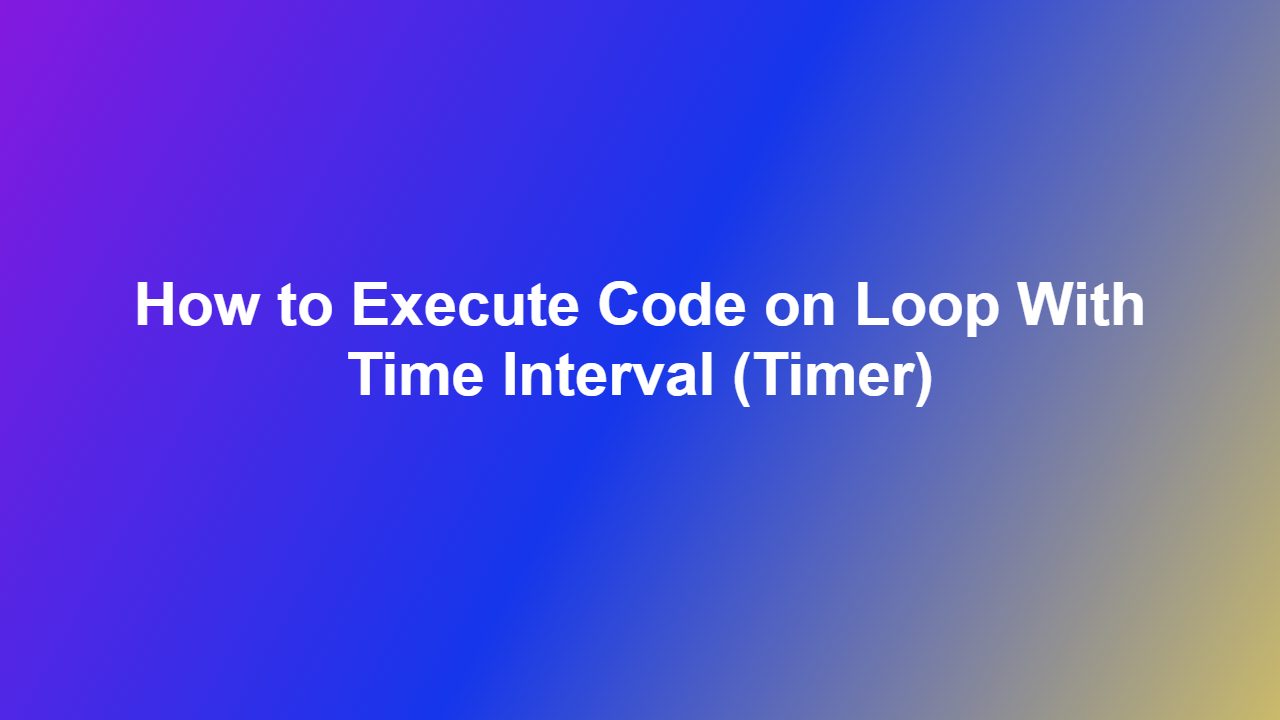How to Execute Code on Loop With Time Interval (Timer)
Introduction
Executing code on a loop with a time interval, also known as a timer, is a common requirement in programming. It allows developers to run a specific block of code at regular intervals, which can be useful for a variety of tasks, such as updating a dashboard, sending notifications, or performing maintenance tasks. In this article, we will explore the different ways to execute code on a loop with a time interval.
Understanding Time Intervals
A time interval is a period of time between two events. In programming, time intervals are used to schedule tasks to run at specific times or after a certain period of time has elapsed. Time intervals can be measured in seconds, minutes, hours, or even days.
Executing Code on a Loop
To execute code on a loop with a time interval, you can use a variety of programming techniques, including loops, timers, and schedulers. One of the most common techniques is to use a while loop in combination with a sleep function. The sleep function pauses the execution of the code for a specified amount of time, allowing the loop to run at regular intervals.
Code Example
Here is an example of how to execute code on a loop with a time interval using Python:
“`python
import time
def execute_code():
print(“Code executed”)
while True:
execute_code()
time.sleep(5) # wait for 5 seconds
“`
In this example, the `execute_code` function is called every 5 seconds using a while loop and the `time.sleep` function.
Using Timers
Another way to execute code on a loop with a time interval is to use a timer. A timer is a programming construct that allows you to schedule a task to run at a specific time or after a certain period of time has elapsed. Timers are often used in combination with loops to create a scheduling system.
Code Example
Here is an example of how to use a timer to execute code on a loop with a time interval using JavaScript:
“`javascript
setInterval(function() {
console.log(“Code executed”);
}, 5000); // execute every 5 seconds
“`
In this example, the `setInterval` function is used to schedule a task to run every 5 seconds.
Conclusion
Executing code on a loop with a time interval is a common requirement in programming. By using techniques such as loops, timers, and schedulers, developers can run a specific block of code at regular intervals. In this article, we explored the different ways to execute code on a loop with a time interval, including using while loops, timers, and schedulers.
FAQ
1. What is a time interval in programming?
A time interval is a period of time between two events.
2. How can I execute code on a loop with a time interval?
You can use a while loop in combination with a sleep function or a timer to execute code on a loop with a time interval.
3. What is a timer in programming?
A timer is a programming construct that allows you to schedule a task to run at a specific time or after a certain period of time has elapsed.
4. How can I use a timer to execute code on a loop with a time interval?
You can use the `setInterval` function in JavaScript or the `time.sleep` function in Python to schedule a task to run at regular intervals.
5. What are some common use cases for executing code on a loop with a time interval?
Common use cases include updating a dashboard, sending notifications, or performing maintenance tasks.
